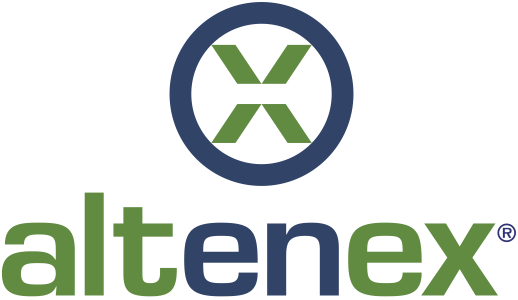Finance, Solar, Sourcing Renewables, Wind - June 13, 2016 - By Blaine Collison
Finding the right renewable energy project: The importance of comprehensive market access
Sponsored by Altenex
The corporate, industrial and institutional renewable energy market continues to accelerate as more and more organizations look to reduce electricity costs, control energy price volatility and address greenhouse gas emissions. Properly selected, analyzed and structured renewable energy supply does all of that.
But it isn’t easy. The direct renewables market remains opaque and complex in many ways, slowing organizations’ efforts. In this piece, we’ll dive into one of those complexities — market access – that can, managed properly, be turned into an asset for renewable energy buyers.
"How do I tell senior leadership I found the best project for us?"
About a year ago, I was talking with the senior environmental officer of a Fortune 500 company that was (and remains) an established, experienced leader on voluntary greenhouse gas reductions. But they hadn’t done much with renewable energy yet. When I asked what their current renewables thinking was, the officer replied, “I get six to eight calls from project developers each week, all wanting to pitch me on a specific project. I’ve never heard of most of them, and they all call back eight to ten times. We don’t know how to find what we need.”
In a different conversation, an experienced energy manager told me his company’s renewables effort had foundered when they received only a dozen responses to an request for proposals. The responses seemed to be in a mix of different performance metrics, which make comparisons difficult, and none appeared to offer the economic value the company was anticipating.
These are not unique experiences.
It’s incredibly difficult for a potential offtaker to assemble enough project and developer due diligence to ensure that they’re covering the full set of opportunities available to them. It’s equally difficult to normalize and compare project data across developers, or to assess development risk of specific projects. RFPs can be helpful, but they need to ask for the right data and metrics. And what happens when an RFP doesn’t get enough responses? Or the right responses? Even then, those responses become outdated almost immediately as projects move through the development process and as market conditions evolve.
All of this puts the corporate energy manager in a challenging position: How do they demonstrate to senior leadership that they’ve identified and selected the best project for their company? The only way to do that is to look at the entire supply market and then focus on the projects that best align with his or her organization’s key value drivers.
The importance of a comprehensive outlook
There are over 5,000 active projects in the North American renewable energy development and supply pipeline. They are literally all over the map, and range in size from one megawatt to hundreds of megawatts.
The need to give corporate energy leaders comprehensive visibility into that supply pipeline was one of the core issues identified by Altenex’s charter advisory board — which included members from General Motors, Home Depot, Procter & Gamble and Microsoft — when the company was founded in 2010.
Traditionally, companies have gone about solving this issue by either issuing a request for proposals, hiring a consultant or dedicating internal resources to researching the market. Altenex’s solution was to build a comprehensive, dynamic database that captures and tracks the key development, economic, risk and performance parameters for projects across North America, including technology, permitting, interconnection, financing, timing and track record; more than 100 layers of information from both public and private data streams for any given project.
Having access to all of this information can have very significant implications for energy managers.
First, instead of having to go through a data-gathering exercise around supply options, they can focus on defining and refining their organization’s key performance and evaluation criteria. Second, with those criteria in hand, the 5,000 projects in the pipeline can be quickly narrowed to a list of up to 100 projects that meet a first-pass screening. From there, Altenex does a detailed economic and risk analysis on every project under consideration, producing successive generations of a short list and a final target list for selection and execution.
For energy managers, each step in the identification and analytics process provides another quantified, granular analysis to support the organization’s ultimate decision-making.
Taking action
In the constantly moving and increasingly complex renewable energy market, corporations are more and more frequently needing to utilize comprehensive knowledge to develop their own energy criteria; identify the best-aligned projects sourced from the industry as a whole; and ask developers the right questions.
In our experience of helping customers execute more than 1.2 GW of transactions, we've learned that senior corporate leaders are much more likely to approve renewable energy transactions when energy managers can describe a comprehensive identification and diligence process that has narrowed a comprehensive approach to the market down to the best opportunities for their companies.
And those opportunities are out there in the market. The energy manager that can find them will save their company money and help accelerate American’s exploding clean energy economy.
Graphic: Wind and solar projects in the U.S. development & supply market
Source: Altenex Tracking Database
 This is the first in a series of columns sponsored by Altenex addressing the interests of Smart Energy Decisions' readers. To learn more about how to reduce energy costs, control price volatility, and improve your company’s sustainability performance, please visit www.altenex.com.
This is the first in a series of columns sponsored by Altenex addressing the interests of Smart Energy Decisions' readers. To learn more about how to reduce energy costs, control price volatility, and improve your company’s sustainability performance, please visit www.altenex.com.
Share this valuable information with your colleagues using the buttons below:
« Back to ColumnsStay Up-To-Date












